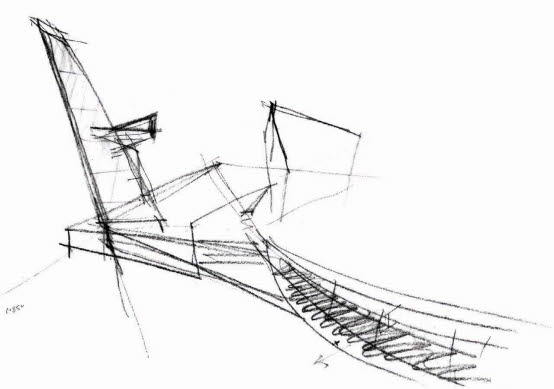
1
1. Eric Parry’s early pencil sketch for the Southwark Gateway in London exemplifies how, in contrast to a conceptual diagram, an early sketch for a project can embody layers of ideas. In this drawing the first layer is a spatial arrangement: the perspective of a hard landscaped area first captures the sense of a place that may resist the language of street furniture, barriers, and traffic chaos typical of the area. The second layer is about more formal articulation, showing an idea for a podium and inclined needle. These are ideas about townscape. Finally the sketch even implies the materiality of the landscape elements (limestone) in the coursing of the needle, and to some extent in the character of the line weights themselves. These layers of thinking come together as a synthetic sketch with a real sense of scale and order that is subsequently worked and reworked, holding together the integrity of the design from urban proposal to detail.
TIP ROLE OF THE SKETCH
Sketch in whatever medium is to hand. Emphasize the role the sketch plays rather than the qualities of the sketch itself: a sketch should be used to observe, think or invent.
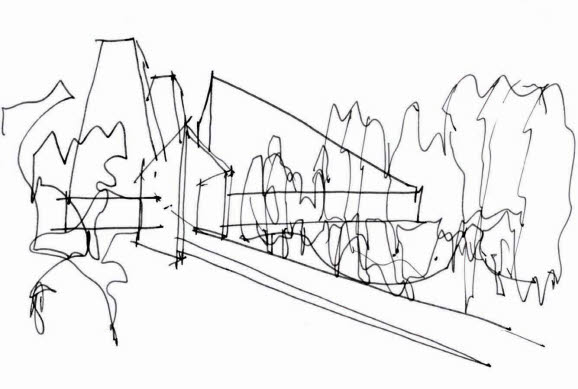
2
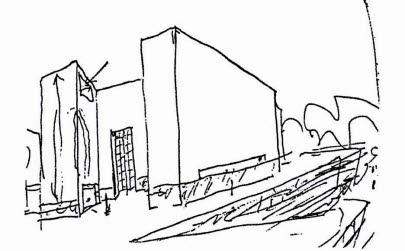
3
2, 3. The perspective sketches by Eduardo Souto de Moura (above right) and Alvaro Siza (below right) are done in ink, using simple lines to capture formal arrangements of buildings that are set against the scale of the surrounding landscape. Like the sketch shown above by Eric Parry, these swift drawings powerfully establish a formal proposal that responds to both program and context. There is a clear delineation of volumes, entrances, and access, and the drawings have a sense of real precision despite the relative freedom of execution where lines overlap and perspective is distorted. The same clarity and discipline is evident in both architects’ painstaking attention to detail and the material quality of their built work.
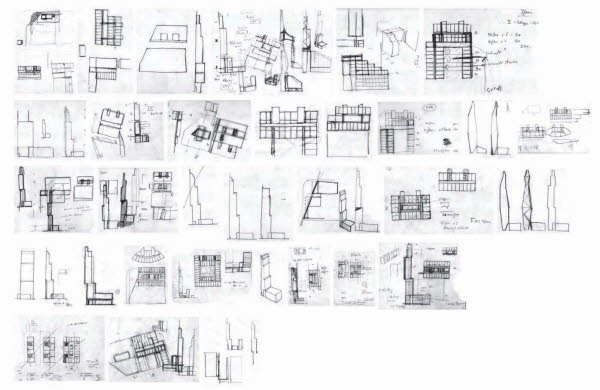
4
4. The previous drawings by Parry and Souto de Moura (pages 92–93) are not stand-alone images as they are presented here; rather, they are part of a design development that will include other sketches, models, and orthographic drawings. This kind of series is illustrated here in the work of Ian Simpson Architects. The architect Ian Simpson has a remarkable ability to drive even the most commercial of projects with the creative energy that is generated from early sketches. Here is a series of exploratory sketches, traced over a very basic CAD guide drawing showing floor levels and basic building widths. The drawings were targeted at rationalizing and exploring the formal development of the Beetham Hilton tower in Manchester. Each sketch, in pencil on soft detail paper, took about one minute and the whole study was conducted at the drawing board over the course of about one hour. It was later scanned and assembled into a composite sheet for internal review and design development over the subsequent few days.
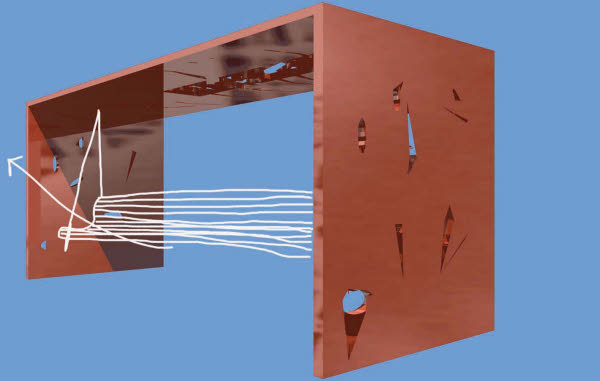
5a

5b
5a, b. In this concept study for garden furniture Will Alsop expresses the desire to think about new kinds of garden furniture altogether. The two images show how a sketchbook study can be combined with a simple digital model. The resulting image takes the initial sketch further in that it represents color and material qualities and sense of scale. At the same time, in keeping the hand-drawn lines of the swing seat, the computer image retains a sense of openness to the fluidity of the design process. This interchange between sketchbook and sketch computer model is fruitful.
